Jobs to do in the garden in May – prepping veg plots, planting hanging baskets and nurturing lawns
It's a very busy time of year for gardeners – and one full of reward!
It's spring! The sun is out and recent showers have given gardens the boost needed to get growing, so now is the time to do a bit of prep work to reap the benefits all summer.
'As the weather warms, it’s a great month to plant your patio containers, hanging baskets and window boxes with summer bedding plants' explains Marcus Eyles, resident gardening expert and horticultural director at Dobbies.
'These will put on a fabulous display of floral colour until the frosts return in the autumn. It’s never too late to get planting and growing, but for a long season of colour and blooms on your doorstep, May is the ideal time to get underway if you haven’t already.'
Seeds should be sown, vegetables and flowers should be planted, and lawns should be given some tender loving care to ensure they are looking luscious and well-nourished for sunny days spent outdoors.
Visit our garden ideas channel for more inspiration
Jobs to do in the garden in May
But with so much to do in the garden in May, what is top of the priority list? Marcus shares his gardening jobs of the month, helping you to get one step closer to your dream garden.
Here's your May garden to-do list...
Get the Ideal Home Newsletter
Sign up to our newsletter for style and decor inspiration, house makeovers, project advice and more.
1. Prep your pots
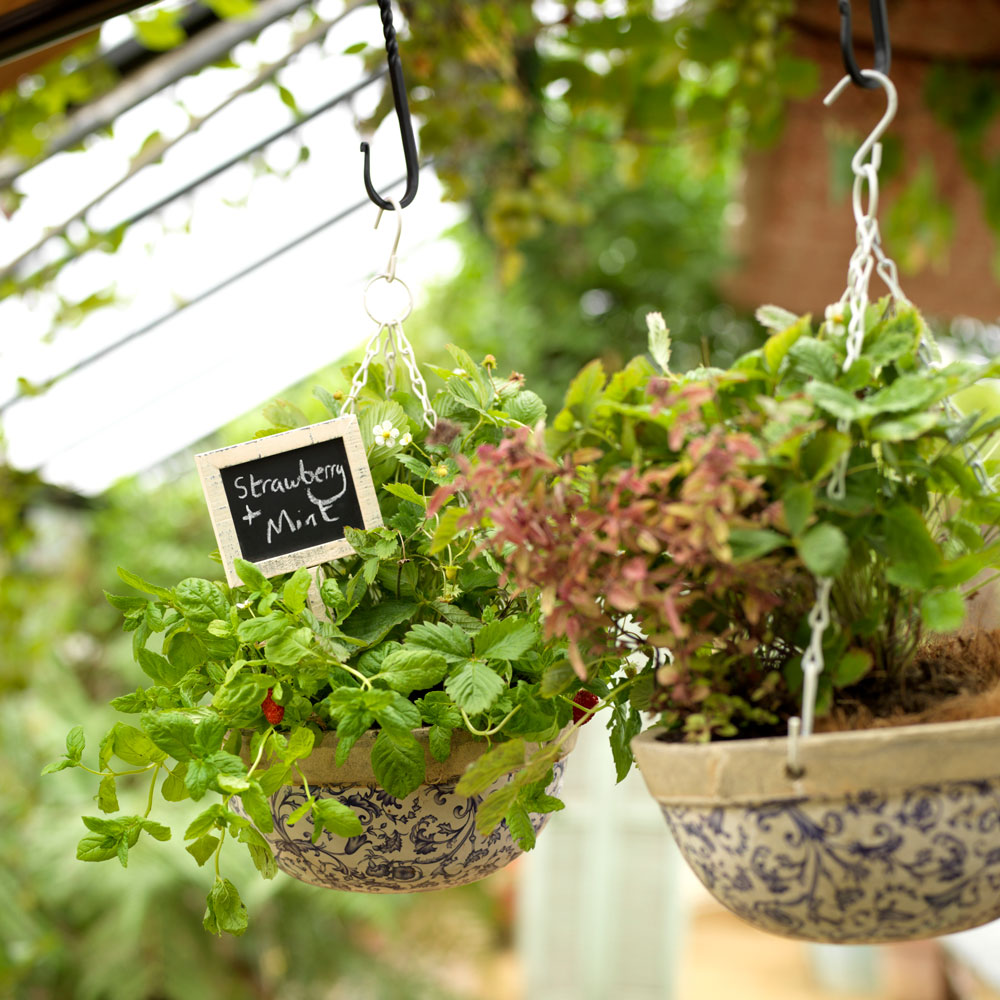
Plant up your outdoor pots and summer hanging baskets, but keep them in a greenhouse or porch for a few weeks to establish, before putting them outside. 'Depending on your location, tender bedding plants such as Cannas and Dahlias can be planted out towards the end of the month, but you should remain vigilant of any late frosts and protect accordingly' Marcus warns. 'Colder areas may be wise to wait until early June, or until all risk of frost has passed.'
'Bedding plants raised from seed can now be hardened off in a cold frame over a period of 7 to 10 days before planting out. Establishing the plants encourages roots to grow out and increase their drought tolerance which means they will be able to withstand the drier months ahead.'
'Remember to feed containers and hanging baskets fortnightly with a liquid fertiliser, as per the manufacturer’s instructions, to keep them healthy and looking their best' advises Marcus.
2. Sow vegetable crops
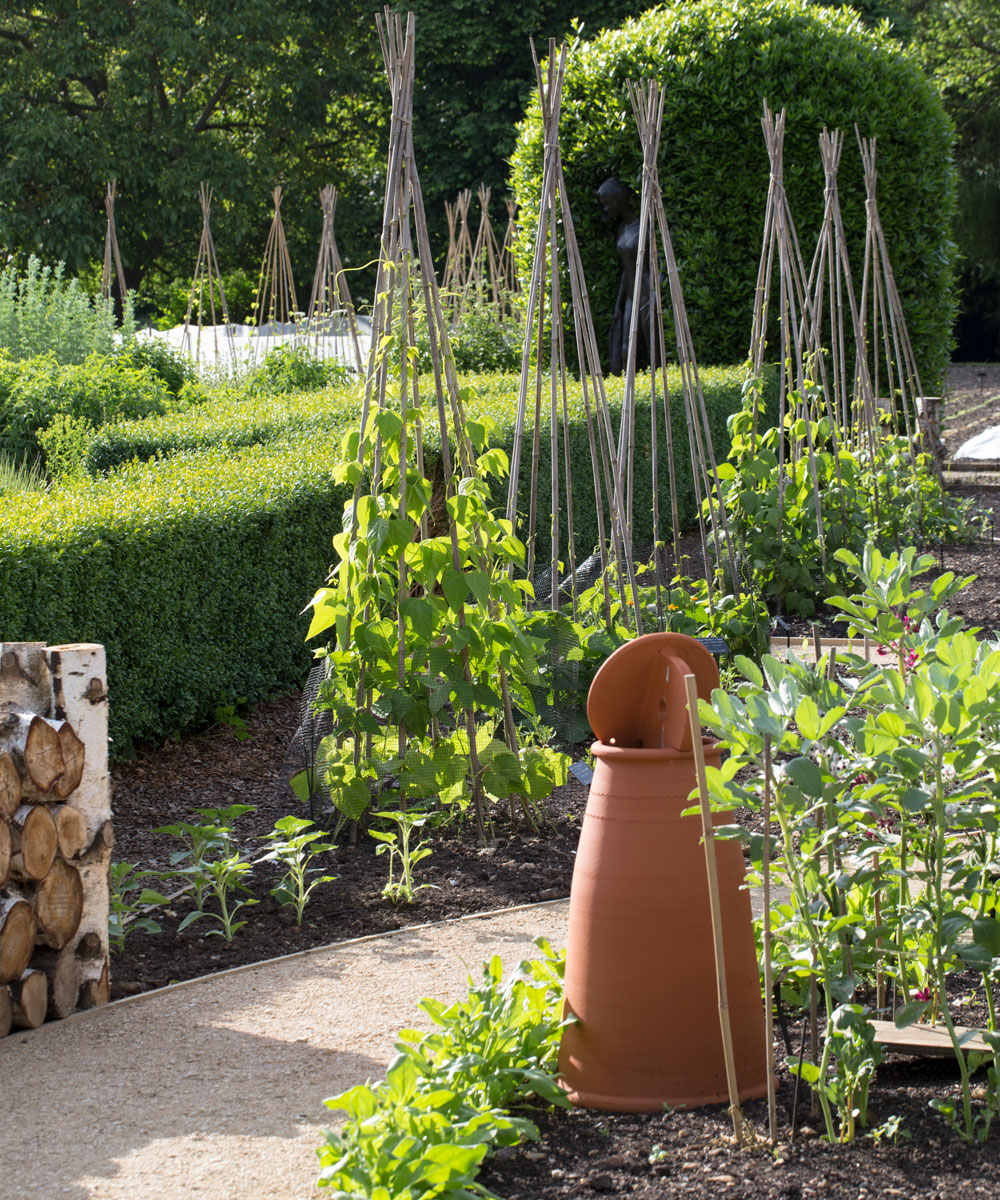
'Most vegetable crops can be sown now. With quick growing crops such as salads and Spinach, repeat sow every 10 days to ensure a consistent supply of fresh leaves' advises Marcus. Start sowing runner, dwarf and climbing French beans.
All beans appreciate a rich, deep, well-drained soil in a sunny position, so before sowing make sure you dig over your plot to clear any rocks and large stones, and dig in a good amount of compost or well-rotted farmyard manure to encourage the beans to grow.
3. Mulch beds and borders
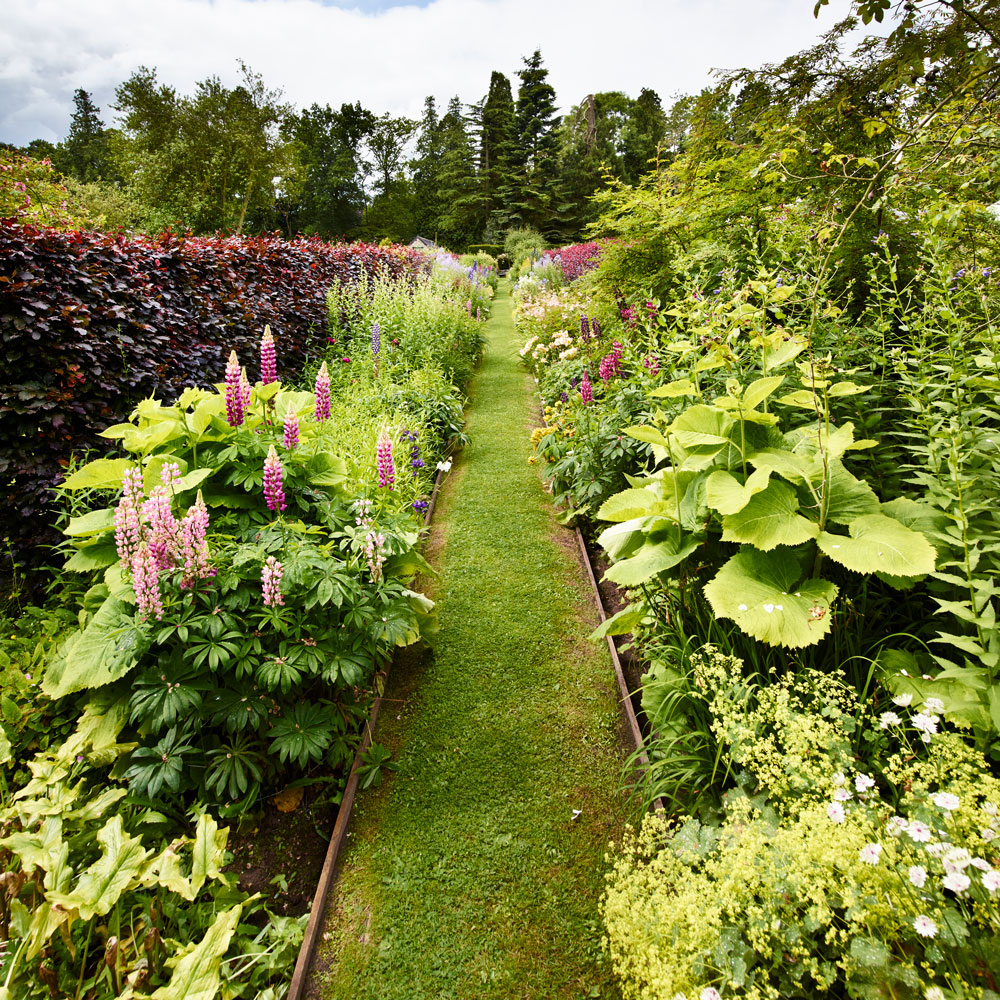
Not only does mulching lock in the soil’s moisture and improve its texture, it also works to suppress weeds. 'Warmer temperatures will herald the appearance of weeds. The quickest and easiest way to control them is to hoe them off before they get chance to get established, applying a thick layer of mulch over the soil surface to help keep any further weeds at bay' explains Marcus. 'Mulching with organic matter, such as farmyard manure, also locks in moisture and, over time, helps to improve your soil, whilst giving plants a well-needed boost.'
By covering the soil with mulch, weed seeds struggle to come into contact with the soil when they land; this, combined with their deprivation of light means they cannot germinate and are prevented from growing. Make sure you apply enough mulch (around 2-3 inches) and ensure that the mulch is not pushed too closely up against your plants.
Further ideas: Easy garden ideas – simple updates to transform your outdoor space
4. Quench crops’ thirst
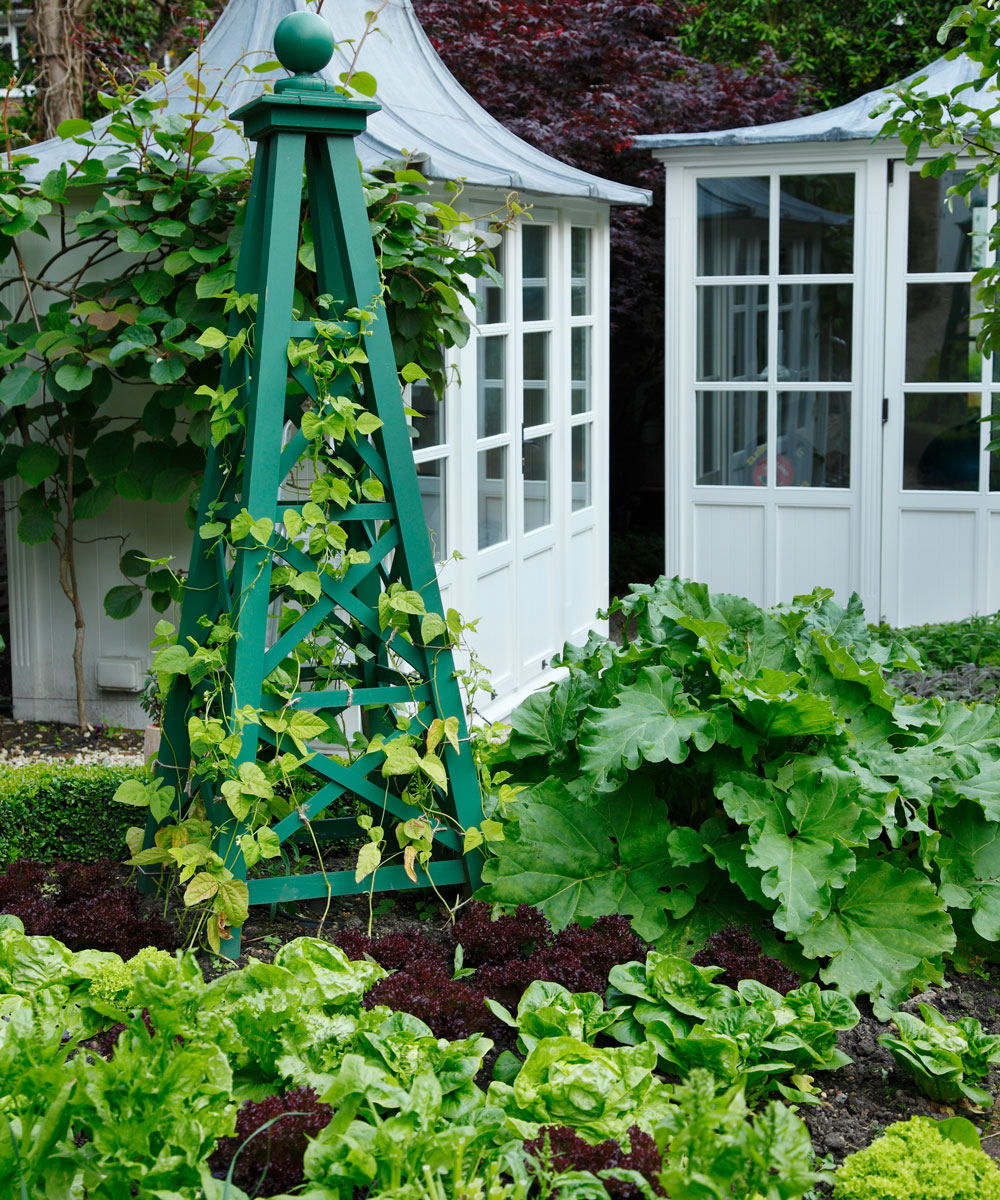
Now that the weather is warming up it’s important to water thirsty crops such as tomatoes, cucumbers and courgettes regularly. Make sure that the soil or compost stays moist but is not waterlogged and take care to water the ground around the plant and not the leaves.
5. Preserve future flowering with deadheading
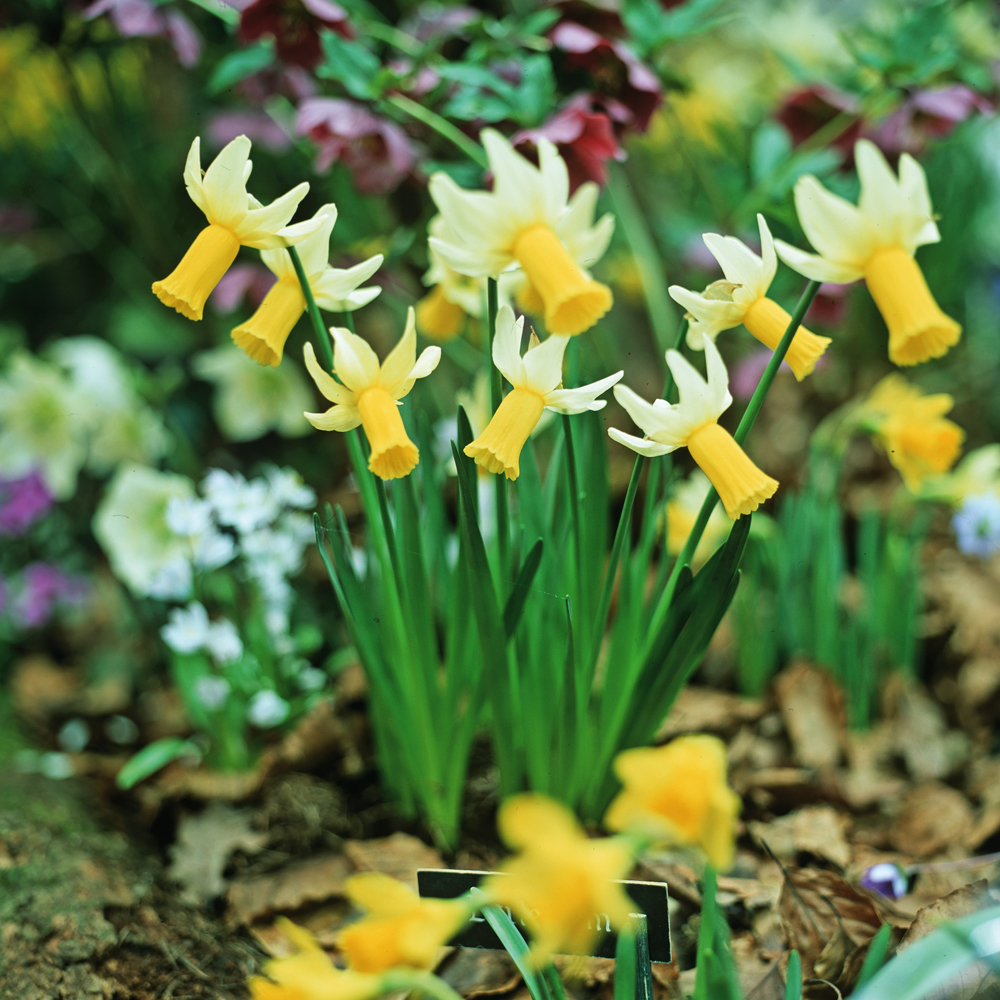
'Deadhead clumps of daffodils and tulips, so that energy is concentrated back into the bulb for next spring' says Marcus. 'Leave the foliage in place to die back naturally as this feeds the bulbs.'
'Wallflowers and early spring bedding will be starting to fade now, so remove tired plantings, adding them to the compost heap, to make way for fresh summer displays. Prune early spring flowering shrubs such as Chaenomeles, Forsythia and Ribes after flowering, if required. More tender late summer flowering shrubs such as Caryopteris, Perovskia and hardy Fuchsias can also be trimmed now, if they need it.'
6. Be vigilant of pests!
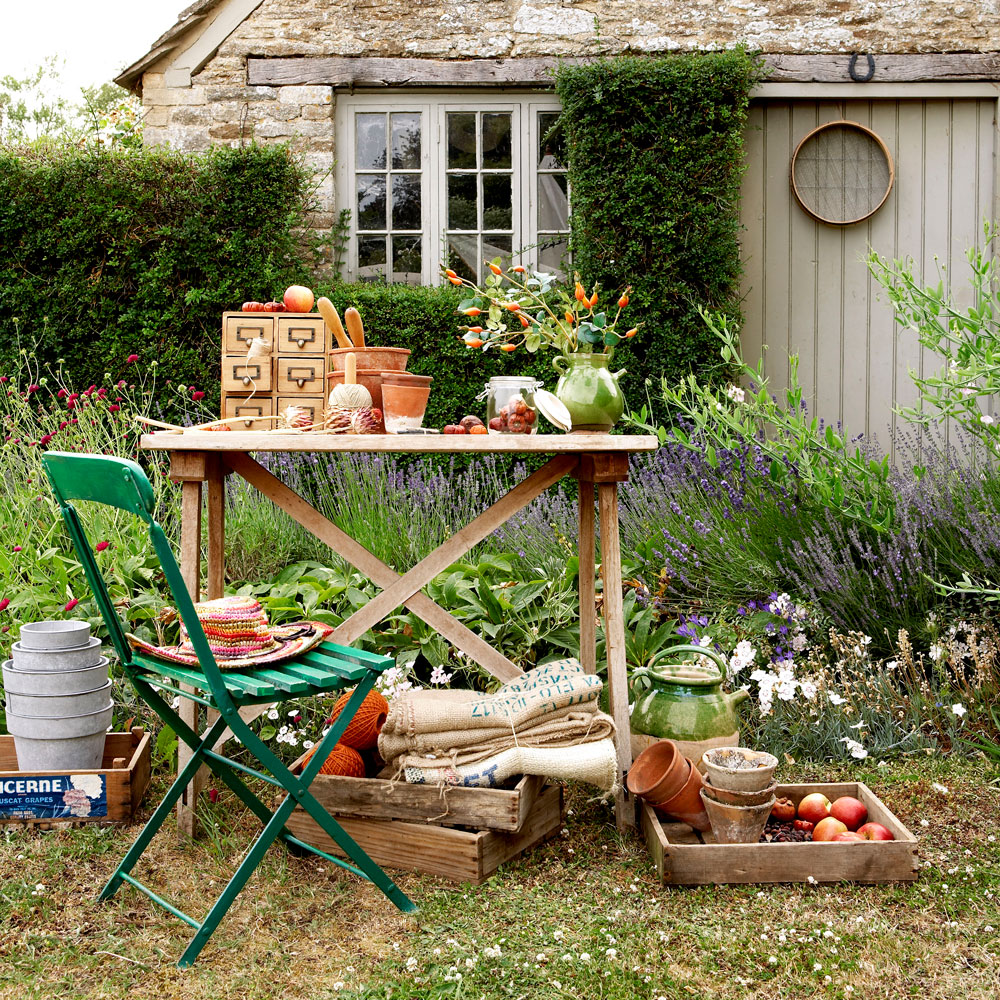
It’s important to check plants regularly for pests. Pay close attention to shoot tips to check for pests, such as capsid bugs, as well as the underside of leaves which can attract aphids, mealy bugs, red spider mites and thrips. There are plenty of ways to ward off those unwanted pests in an eco and wildlife friendly way without causing damage to your plants.
'Protect young seedlings from slugs. For non-chemical control, apply nematodes to the surrounding soil as an effective organic control' suggest Marcus.
7. Tend to the lawn

Apply nitrogen-rich summer feed to your lawn to encourage leafy growth. May is the best time of year to do this as the longer daylight hours and warmer soil create the perfect conditions for the grass to grow. Always fertilise your lawn after mowing to avoid disturbing the fertiliser on the surface.
'Regular weekly mowing is best for a healthy lawn, mixing the clippings into your compost heap' Marcus suggests. 'Early May is an ideal time to sow new lawns, or repair bare patches, on ground that has been pre-prepared, levelled and firmed. Alternatively, for quicker results, lay new turf. Whichever method you choose, be sure to keep it well watered, and avoid walking on it for a few weeks to allow time for new roots to establish themselves.'
Related: Lawn care tips – expert ideas for healthier grass and improved turf
7. Grow beautiful Foxgloves
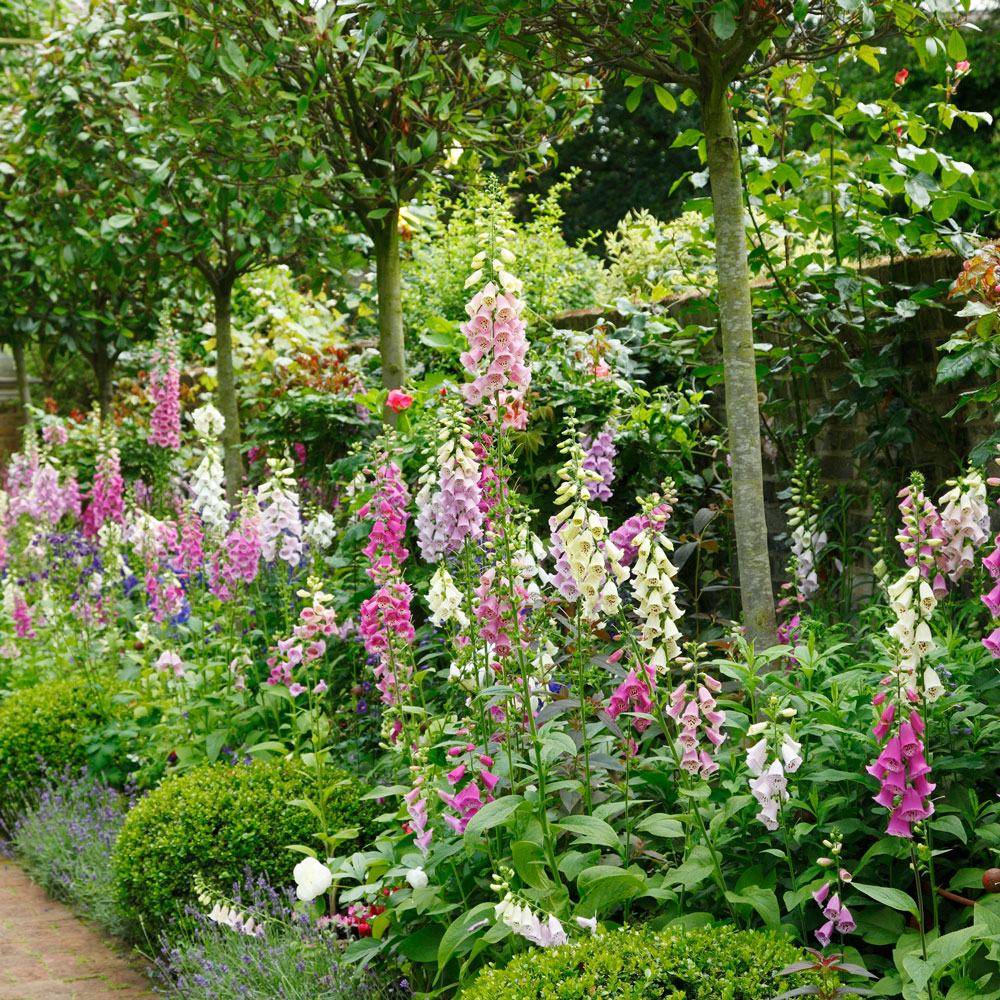
'This month, cottage garden plants are growing madly and filling borders with their vigorous growth' says Marcus. Tall, striking and graceful, foxgloves are one such example – the perfect plant for the back of a border in dappled shade. While they prefer moist soil, they will tolerate a dry spot, especially if you give them a generous mulch of dried bark in spring. Growing up to 2m, they look stunning grown alongside a hedge or in a circle around a specimen tree.
These plants are generally biennial, which means they grow their leaves in the first year then flower in the following year. However, they set seed very freely, so new plants are likely to keep popping up in the same position. If seedlings appear where they're not wanted, wait until they are around 10cm tall before you transplant them to a more suitable spot. The new plants may be different colours to the parents which can lead to some exciting discoveries!
Read more here: Cottage garden ideas – create a charming country-style garden in any setting
Will you be tackling any of these May gardening jobs?
Tamara was Ideal Home's Digital Editor before joining the Woman & Home team in 2022. She has spent the last 15 years working with the style teams at Country Homes & Interiors and Ideal Home, both now at Future PLC. It’s with these award wining interiors teams that she's honed her skills and passion for shopping, styling and writing. Tamara is always ahead of the curve when it comes to interiors trends – and is great at seeking out designer dupes on the high street.
-
 Wood drenching is the calming new twist on the colour drenching trend – here’s how to make the look work in your home
Wood drenching is the calming new twist on the colour drenching trend – here’s how to make the look work in your homeIt’s easier than ever to embrace natural materials
By Maddie Balcombe
-
 Aldi is launching a £200 day bed with four different features - its sleek design is suited to the whole family
Aldi is launching a £200 day bed with four different features - its sleek design is suited to the whole familyYou don't want to miss out on this Specialbuy
By Kezia Reynolds
-
 How to set up a drip watering system that saves water and a lot of effort
How to set up a drip watering system that saves water and a lot of effortKeep your plants hydrated (and your water bill down) with this clever garden watering solution
By Natalie Osborn